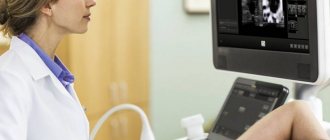In the medical industry, for many years, radiation diagnostic methods have held a strong leading position, without which it is impossible to identify pathological processes occurring in the human body. Despite the continuous development of modern science and the emergence of more modern methods for examining internal organs (such as ultrasound, MRI and CT), radiography is considered one of the simplest, most accurate, economical and reliable methods of examination.
Today, all medical institutions have X-ray equipment. However, almost every patient remembers a school physics course that mentions the health hazards of radiation exposure. And upon receiving a referral for examination, the patient immediately has the following questions:
- is x-ray harmful?
- in what cases is it contraindicated;
- how harmful is the examination for a pregnant woman and baby;
- is it possible to do without this procedure;
- Is dental x-ray dangerous?
In our article, we want to together find the answer to all these burning questions and provide information about how x-rays are harmful to the human body.
What is radiography?
X-ray radiation is an invisible electromagnetic wave that penetrates all substances, its length reaches ten centimeters and, when exposed to photographic material, causes it to blacken. These rays were discovered in 1895 by the German physicist Wilhelm Conrad Roentgen, and their study was continued by other scientists.
A special feature of X-rays is their ability to display the internal structure of a person on photographic film, which is widely used in many branches of medicine:
- Traumatology. Bone tissue is less transparent to electromagnetic rays, which is why bones are clearly visible on an x-ray - this makes it easy to detect any defect (crack, fracture, inflammatory process).
- Dentistry. To identify dental pathologies - caries, root abscesses.
- Pulmonology. Traditional preventive fluorography is also an X-ray examination of the chest organs.
- Gastroenterology. X-ray of the stomach and intestines using a contrast agent is one of the most accurate methods for studying the functional activity of the digestive tract organs and diagnosing possible pathologies.
- Oncology. X-rays successfully fight against atypical cells, but they are used with great caution due to the negative effect on normal cells.
X-rays are widely used in industry - they make it possible to identify even the most minor defects in castings, rubber, plastics, and chemical compounds.
Treatment with X-rays
Despite the fact that X-rays are harmful to health and can cause some diseases, scientists have found use for them in the treatment of pathologies.
X-ray radiation in modern medicine is widely used in the treatment of malignant neoplasms. The basis of such radiation therapy is the ability of X-rays to influence the ionic composition of cells and tissues and change their structure .
With the help of radiation therapy, it is possible to stop the pathological division of malignant cells, stop the growth of tumors and the spread of metastases throughout the body.
Treatment with X-rays is usually difficult for the body to tolerate. But, despite the large number of side effects, it helps in the fight against cancer and gives a person a chance for a future life.
How is an X-ray examination performed?
Almost every patient in a medical institution had to undergo examination using X-ray equipment at least once in their life. To eliminate the excessive impact of electromagnetic radiation on the human body, radiologists put on the patient special protection (collars, aprons) with a lead plate. Only the area of the body being examined remains open.
The entire diagnostic procedure takes no more than a quarter of an hour; while the equipment is operating, the radiologist is located in the equipment room. Depending on the organs being examined, the patient sits or lies. For example, when performing an X-ray of the spine, you must take a lying position.
Many people, not knowing how X-ray examination is performed, believe that the harm of X-rays has already been proven - after all, radiation negatively affects the human body. However, not a single practicing doctor will prescribe this procedure unless necessary, and there are practically no contraindications to its implementation.
When can doctors order an x-ray?
Since the procedure may be unsafe, doctors give referrals for examination of children only in extreme cases. No one can tell you how many times you can do an x-ray; it all depends on the indications. It can be:
- falling from a height, injuries during outdoor games, road accidents;
- birth injuries;
- problems with bone growth and mineralization of bone tissue, which manifests itself as rickets and osteoporosis;
- entry of foreign objects into various cavities and organs (ear, nose, stomach);
- skull injuries;
- neurological disorders;
- asymmetry of bone formations, congenital abnormalities in the formation of the facial skeleton;
- signs of pulmonary tuberculosis;
- as preoperative preparation on any organ.
These factors are good reasons to have your child x-rayed for diagnostic purposes. It is not carried out for the purpose of prevention.
Is it harmful to take an x-ray?
The maximum permitted dose for humans is 150 mSv per year. The usual standard procedures that have to be completed annually do not exceed 20 mSv (millisievert). However, in case of obesity and pregnancy, it is better to refuse X-ray diagnostics. Electromagnetic radiation can harm an unborn baby - affecting the normal formation of its internal organs and tissues. And an excess of fat will prevent you from taking a clear picture - dark spots appear on the film.
For children under 16 years of age, X-rays are recommended only in emergency cases - fractures, head injuries, hip dysplasia, pneumonia. If procedures have to be performed frequently, the maximum radiation dose to a child should not exceed 50 mSv.
Before X-rays are taken for a child under one year old, in order to avoid unnecessary movements, he is fixed using a special device.
The danger of X-ray examination lies only in the case of the patient receiving a large dose of radiation. The harmful effects of electromagnetic rays on the human body are manifested by:
- erythema - sunburn, characterized by deep and persistent damage to the skin;
- changes in blood composition - short-term with a small excess of radiation, with prolonged exposure to rays there may be irreversible changes;
- early aging of the body;
- formation of tumor-like formations;
- infertility;
- development of genetic abnormalities in offspring.
Of course, such consequences cannot but alert every modern person. However, if the influence of X-ray equipment poses such a danger to the patient’s condition, why is X-ray examination so widely used in medicine and can it be replaced?
In what cases are x-rays prescribed?
After an acute respiratory viral infection, a complication may begin in a child or adult. This happens especially often if you suffer from the disease on your feet, do not receive proper treatment, and swallow only antipyretic pills. The complication manifests itself in the penetration of infection into the lungs and the appearance of pneumonia (pneumonia). If a child begins to lose weight at a high temperature, the doctor will suspect tuberculosis.
Blood in a test tube
An X-ray of the lungs and a clinical blood test are prescribed for the following symptoms:
- blood test indicators indicate an inflammatory process;
- the patient has shortness of breath;
- breathing rhythm is disrupted;
- the temperature remains elevated;
- cough does not go away;
- The patient complains of chest pain.
Also, x-rays and blood tests are sometimes prescribed when examining other organs. For children, an X-ray of the lungs and a clinical blood test are simultaneously prescribed as a last resort if there is a suspicion of various types of acute pneumonia.
Why you shouldn't be afraid of X-ray examinations
The influence of electromagnetic radiation on the human body exists; this fact cannot be denied. However, should patients in X-ray rooms be wary of it? We are all afraid of radiation and have heard a lot about how negatively it affects the condition of the body as a whole. But few people are aware that a person receives only 30% of radiation from artificial sources, the rest comes from natural objects of radioactive radiation.
Every day, the population of countries that have a large amount of rocks (Finland, Sweden, Norway, France) receives a significant dose of radiation - they contain radon gas.
However, no surges in cancer cases have been registered there! People living in these countries do not get sick more often than the rest of the population, and some regions are famous resorts. The world's oceans and the human body itself have a certain dose of radioactive radiation - this is a potassium isotope with atomic number 19 and mass number 40. The proximity of an industrial enterprise operating on nuclear energy increases the dose of radiation by 1%.
It should also be remembered that every day a person receives his dose of cosmic radioactive radiation
According to statistics, every resident of Russia annually receives 2 mSv of natural radioactive radiation, the world average is 2.4 mSv. When undergoing medical tests, you can add another 1 mSv. These figures indicate that when undergoing an X-ray, the human body receives minimal stress, especially when using the latest digital equipment.
For many regions of Russia, the problem of pulmonary tuberculosis morbidity among the population is very relevant. That is why it is necessary to undergo an X-ray examination, but not very often.
How to do x-rays for children - the procedure for performing x-rays
Parents need to learn how children are x-rayed so they know what to expect from the examination:
- To get a high-quality image, the child must lie still. If the picture turns out to be of poor quality, the x-ray is taken again.
- A special support is provided to secure the child’s body and limbs, and a child under two years of age is placed in a special plastic flask.
- Parents should not remain in the room where the study is being conducted. They may return when the warning light goes off. If parents need to be present during the procedure, they wear special lead aprons.
- Taking into account the child's age - and if possible - he should be provided with protective equipment.
- If the studies take a long time, the child may be prescribed sedatives or anesthesia, but this rarely happens. The child must be protected from radiation: it is necessary to use covered lead protection for the eyes, thyroid gland, and genitals. During an x-ray examination of organs, children under one year of age are covered with protective equipment, excluding the area where the x-ray is taken.
Video: X-ray, its pros and cons
What is more harmful - Mantoux or X-ray?
Today, practicing medical specialists pay great attention to the issue of identifying infection of the population with Mycobacterium tuberculosis and diagnosing the disease in the early stages of development.
Children undergo the Mantoux test annually; in adults, diagnosis is carried out using the following studies:
- preventive fluorography;
- plain radiographic examination;
- bacteriological analysis of sputum;
- computed or magnetic resonance imaging.
X-ray diagnostics are prescribed for children only in special cases, therefore, to detect infection with Koch's bacillus, a tuberculin test is performed
The Mantoux reaction is the introduction into the child’s body of a small dose of waste products of mycobacterium tuberculosis, which causes an immune response. The degree of reaction of the child’s body corresponds to the presence of infection.
The tuberculin test has a number of negative aspects. The size of the post-injection papule depends on the reactivity of the child’s body. If a small patient has an allergy, a violent immune response is observed - the size of the spot exceeds the permissible 5 mm. A weakened immune system can cause the reaction to be negative even in the presence of infection.
Is fluorography harmful?
The diagnostic procedure must be carried out in an anti-tuberculosis dispensary. However, it is often carried out in children's institutions where the staff does not have a good command of the technique of performing the test.
In addition, water should not get into the tuberculin injection site, it should not be rubbed or injured, and children do not always comply with such requirements. This leads to a false positive reaction.
Despite the small dose of the diagnostic test, a child with a certain susceptibility may develop clinical manifestations of an allergic reaction:
- hives;
- bronchospasm;
- Quincke's edema.
Low specificity – the accuracy of the method does not exceed 50%. A positive test result is also observed after vaccination against tuberculosis (BCG), which stimulates the production of immune antibodies that provide protection for the body when it “encounters” the causative agent of the disease, infection with non-pathogenic forms of Tuberculosismycobacterium. However, this technique is still widely used by pediatric phthisiatricians because of its simplicity and accessibility.
What dose of X-ray radiation is dangerous to health?
A mild degree of radiation sickness occurs when the patient’s body is exposed to a load of 3 to 5 mSv - this dose is approximately equivalent to 100 dental x-rays taken in one day. The maximum dose of radiation (however, not exceeding the permissible norm) is received by a patient who has survived an accident and has received severe injuries that require constant monitoring.
A person who receives a radiation dose of more than 5 Sv can die within two months due to bone marrow damage; if the dose is 10 Sv, he will die within 20 days from impaired lung and digestive tract function
A fatal dose of radiation is considered to be a dose above 15 Sv - the functional activity of the nervous system is disrupted, and the patient dies within 1-3 days. However, to receive such a dose from X-ray equipment is an absolute discrepancy with reality! During the examination, the patient receives a dose not exceeding 0.03 mSv.
At what age can X-rays be taken?
There is no lower age limit for X-ray examination. If a child is injured or has a positive Mantoux test reaction, the pediatrician will prescribe an x-ray at any age.
Boy and doctor
X-ray radiation has a negative effect on the growing body and dividing cells of the baby during repeated x-ray examinations. A single dose of radiation will not cause any significant harm to the child’s health. Tomography in the case of pneumonia plays the role of a complementary rather than a primary examination.
How to remove radiation from the body?
A healthy person does not need to take any special measures after an X-ray examination. Frequent visitors to the X-ray room should reduce the effect of radioactive radiation on the body; following a proper diet will help with this.
To remove radiation you need to use:
- dairy products;
- vegetables and fruits;
- freshly squeezed grape and pomegranate juices;
- products containing iodine - seaweed, fish;
- rice;
- prunes.
In conclusion of all the above information, I would like to emphasize that each diagnostic technique can have both advantages and disadvantages. It should be remembered that radiography is performed only if there are certain indications for making an accurate diagnosis and drawing up a rational treatment plan. An inaccurate diagnosis and incorrect treatment can have much more serious consequences than an x-ray procedure.
When is a blood test prescribed?
A clinical blood test is the first step in a doctor’s diagnosis. It is prescribed to be taken for a variety of diseases, since almost all diseases cause changes in the composition of the patient’s blood.
X-ray image on the monitor
A blood test is taken when the doctor wants to find out if the patient has intolerance to medications. Blood is taken at periodic medical examinations. In this case, fluorography, which is a type of x-ray examination, is also prescribed. It involves stronger exposure to X-rays and is prescribed after 14 years of age.
Cardiological, endocrine and other diseases are a reason to prescribe a biochemical blood test to the patient. It determines the content of low and high density lipids, glucose, hemoglobin, bilirubin, protein, urea and other indicators in the blood.
The reasons for prescribing a biochemical blood test are the following diseases:
- kidney or liver failure;
- cardiac diseases;
- disorders of the musculoskeletal functions of the body;
- gynecological diseases in women;
- disruptions in the functioning of the circulatory system;
- suspected diabetes mellitus;
- problems in the functioning of the gastrointestinal tract.
Taking blood from a finger











